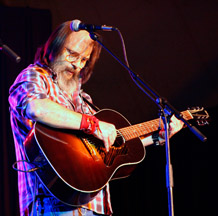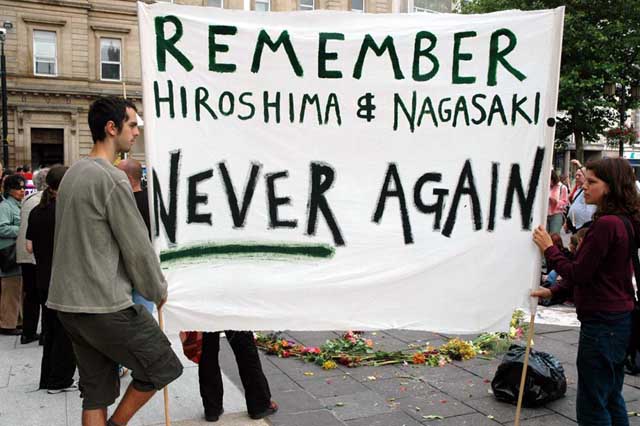43rd Annual Peace Award Performers
Steve Earle
from steveearle.com:
“The city hasn’t changed as much as real estate agents would have you believe,” Steve Earle explains about his adopted hometown of New York City. “Specifically, my neighborhood hasn’t changed that much. I point people in the right direction so that they can take their picture like the cover of Freewheelin’ all the time.”
That’s easy enough for Earle these days, because he and his wife, singer-songwriter Allison Moorer, now live on the very Greenwich Village street on which the famous cover shot for The Freewheelin’ Bob Dylan (1962) was taken. In that photo, Dylan and his then-girlfriend Suze Rotolo huddle against the cold as they walk along a snowy New York street. It’s an indelible romantic image that captures the idealism of the folk revival that was gathering momentum in New York at the time.
Steve Earle’s gripping new album, Washington Square Serenade, is a loving tribute to that era, that movement, that music and the city that gave them all a nurturing home. “That period changed pop music,” Earle says. “It made lyrics much more important. Rock & roll could have become a subgenre of pop if it hadn’t been for that literary aspect, which completely came out of a four-block area in New York City in one brief instant of time.”
Like Freewheelin’ itself, Serenade is an album that combines songs of love and protest, a stirring chronicle of both the connections between people that make life worth living and the things that must be changed in order to make such connections more possible for everyone. “I knew it was going to be pretty personal,” Earle says about the album, which he recorded at Electric Lady Studios, the famed Greenwich Village recording complex that Jimi Hendrix built in the late Sixties. “The best part of my personal life was going so well I knew that chick songs were going to be no problem. As for political songs, I don’t think I’ve ever made an apolitical record. The last two before this [The Revolution Starts … Now (2004), Jerusalem (2002)] were overtly political, and unapologetically so. This one is unapologetically personal.”
Washington Square Serenade opens with “Tennessee Blues,” which updates the title track of Earle’s 1986 debut album, Guitar Town – and establishes the sense of another fresh start. The new version is acoustic, more introspective and more rhythmically charged – all traits highly appropriate for the tale of an artist “bound for New York City” and leaving Tennessee behind. “It’s continuing a narrative – the state of me,” Earle explains.
The “chick songs,” as Earle describes them in apt period slang, include the lovely “Sparkle and Shine,” which echoes both early Dylan and the Beatles, and “Days Aren’t Long Enough,” which Earle co-wrote and sings with Moorer. “I’ve written duets for Lucinda Williams, Emmylou Harris, Iris DeMent and my sister Stacey, so there was no way I was going to get away with not writing a duet for me and Allison,” Earle says, laughing. “I had to – I’m married! But we’ve been singing together as long as we’ve been together, and I wanted something that was a love song about us.”
On the other end of Earle’s passions, “Steve’s Hammer,” which the singer dedicates to Pete Seeger, is an uplifting political anthem, a statement of Earle’s conviction about the role that music can play in achieving social justice. “One of these days I’m gonna lay this hammer down/Leave my burden restin’ on the ground,” he declares, and then makes clear when and only when that day will come: “When the air don’t choke you, and the ocean’s clean/And the kids don’t die for gasoline.”
As we all know, that time has not yet arrived, and “City of Immigrants” makes that point forcefully. A paean to New York’s long history of welcoming people from other countries, the song had a very specific inspiration for Earle. “I knew I wanted to write a ‘Fuck Lou Dobbs’ song,” he says about the CNN anchor who has defined anti-immigration politics as his signature issue. “There’s no excuse for it – it’s ugly and it’s racist.” Supporting Earle on the song is Forro in the Dark, the super-charged neo-folk Brazilian band that’s based in New York.
Washington Square Serenade concludes with Earle’s scarifying version of Tom Waits’ “Way Down in the Hole,” which will serve as the theme for the next season of the HBO series “The Wire.” Earle has a recurring role on the show – “I play a redneck recovering addict, so it’s not acting,” he deadpans.
“It’s daunting to cover a Tom Waits song – he’s one of the best of my generation of songwriters,” Earle admits. “But, then, I once sang ‘Nebraska’ to an audience that I knew Bruce Springsteen was in. It’s not that stuff like that doesn’t scare me – it’s just that doesn’t mean I won’t do it!”
Overall, Serenade is imbued with a deeply intimate feel, because all of its concerns, public as well as private, as essential to who Steve Earle is. That intensely personal quality, however, is deftly complemented – both underscored and unsettled — by John King’s production. As one half of the Dust Brothers, King has worked with the likes of Beck and the Beastie Boys. As a result, rhythms continually percolate, bump and simmer beneath the largely acoustic instrumentation, fashioning a folk/hip-hop hybrid that sonically unites two of New York’s finest musical traditions.
Washington Square SerenadeAsked how he would like listeners to respond to Washington Square Serenade, Earle, characteristically, is ready with a bold answer. “If you feel like you don’t know what America is all about right now, and you want to reorient yourself to what America should be about, it’s a really good time to come to New York City,” he says. “I needed really badly at this point in my life to see a mixed-race, same-sex couple holding hands in my own neighborhood. It makes me feel safer.”
“I’ve been pretty heartbroken about the way things have gone politically in this country the last few years, and I seriously considered moving someplace else,” he concludes. “Then I figured out that I didn’t have to leave the country. All I had to do was come to New York.”
Washington Square Serenade – in its commitment, its values, its musical intelligence and, finally, its very American optimism about the possibilities for a better world – demonstrates why.
– Anthony DeCurtis
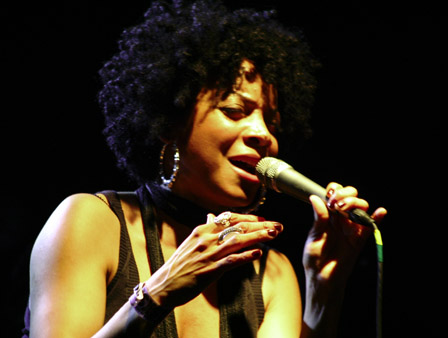
Stephanie McKay
from stephaniemckay.com:
Tell It Like It Is is an especially apposite title for Stephanie McKay’s forthcoming album.
For one thing, it reflects the New York-based vocalist and songwriter’s penchant for penning lyrics that reflect a lively interest in her surroundings and the events in her life. But then, anyone who knows Stephanie would expect that.
On another level it refers to the conclusion of the artist’s search on her second solo album for the sound she hears in her head when it comes to revealing her true musical nature: a gloriously live and funky vibe that wraps up classic soul, seventies funk-rock and old-school hip-hop influences into one vibrant outpouring.
But the album’s title also indirectly points to the way Stephanie’s rise and development as a career artist has been fuelled by the personal recommendations of her peers, as she’s been looking to take the next step upwards. Put simply, the people on the inside have known how good Stephanie McKay is for years – and they’ve been more than willing to tell us so.
For instance, back in the days when Steph was playing guitar in her own band on the NYC club circuit, it was no less than hot producer/songwriter Mark Batson’s notion to co-opt her for Kelis’s world tour, an eight month jaunt that took Stephanie to London. And it was while filming with Kelis for Jools Holland’s Later… TV show that Steph met Portishead’s Geoff Barrow, who, at the suggestion of a mutual friend, New York performance poet and vocalist Carl Hancock Rux, had tripped down from Bristol to check her out.
This meeting led to Steph’s 2003 debut album, McKay, produced by Barrow for Go Beat/Polydor, a project that provoked a mountain of critical approval across the media.
This fruitful word-of-mouth support directly contributed to the creation of Tell It Like It Is. For while McKay was released only in Europe, its undeniably high qualities came to the notice, via a member of staff, of Astralwerks Records’ boss Errol Kolosine, who immediately offered Stephanie a contract to begin work on her second album for the EMI offshoot. What’s more, she was given full charge of its direction.
Thus the most important thing to do was to find herself musically. Says Steph: “I really wanted to find out who I was, outside of the success of another group. I needed to find my own voice, think about what I loved about music, and put that onto my record.”
The title track came to her first, a pulsating, forthright depiction of life outside her Harlem window that vocally evokes the spirits of Gwen McCrae and Jean Knight while punching home its message via a post-hip-hop, psychedelic funk beat, courtesy Robert ‘Chicken’ Burke. Burke came to Steph’s attention via his co-production of the album by Drugs, a band featuring Stephanie alongside Parliament/Funkadelic alumni. The track is also co-written and arranged by Pismo of Oakland, CA. Its inspiration has two sources, says Stephanie: “The first verse, about the teenage mother, is based on my niece. She came to me at age 16 and told me she was having a baby. To be honest, I was devastated. I had so many dreams for her. So that part is really innocence lost. The second verse is about a fatal shooting I witnessed. I went out to buy some bread at the store where I live in East Harlem and I saw this bunch of guys arguing. All of a sudden they started shooting. I ran down into the subway and when I came out there were two boys, 19 and 20, lying on the ground. You hear it on the news all the time, but there it was in front of my eyes. I knew then that the album would have a social message, more than anything I’d done before.”
It set the tone for the album: Money, which follows – another ‘Chicken’ Burke production – rolls and grooves like old-school Norman Whitfield, as Steph emotes on the pressures placed upon us by the pursuit of the mean green.
The moving This Letter came right out of the pages of her daily newspaper, when Steph happened upon a column filled with letters written by the mothers, wives, sisters and girlfriends of soldiers fighting in Iraq. [Trace magazine called it, “Motown meets Tribe Called Quest’s Midnight Marauders.”]
On the outrageously funky Kinky Mckay and Burke team up with Steph’s close friend, the brilliant New York saxophonist Jacques Schwarz-Bart, to create a horn-fired groove so slippery it would have made D’Angelo proud, had he been able to borrow it for Voodoo.
D’Angelo, in fact, provides another link in the chain of people willing to step up to the plate for Steph: Schwarz-Bart played sax on D’Angelo’s Voodoo world tour, which is where he met soul vocalist supreme Anthony Hamilton, who in turn contributes his wonderful voice to Tell It Like It Is on a gorgeous, heart-broken duet with Stephanie, entitled Where Did Our Love Go?
Say What You Feel, meanwhile, which Stephanie co-wrote with Australia’s DJ Katalyst, has Lynn Collins-fronting-The-JB’s written right through it like a stick of rock. In contrast, the album’s closer is an imaginative cover of Willy Mason’s hit Oxygen, transformed by McKay, Burke and Schwarz-Bart into a bluesy, minor-key builder that, by the time the organ fires up, is on its way right back to church. It’s an uplifting finish to a great album.
The story of Tell It Like It Is then took one final twist. A couple of tracks were released by Astralwerks in 2006 as part of a US-only EP designed to introduce America to the McKay talent. Unfortunately, soon thereafter parent company EMI decided to turn Astralwerks into an alternative rock label – and so Stephanie wisely decided to up and take her marvellous completed album over to Muthas Of Invention, who are now more than delighted to be able to release one of the finest, most soulful and intelligent albums you’ll hear all year.
In the meantime, Stephanie has kept right on moving.
Just as she did in the past – when, for example, she backed up her solo projects by touring with Talib Kweli and Mos Def, played at the Bluenote Club with special guest Meshell Ndegeocello, recorded two albums with Brooklyn Funk Essentials and contributed vocals to Roy Hargove’s RH Factor: Hard Groove album – Steph has spent the past few months leading up to Tell It Like It Is release in typically productive manner.
Her collaboration with DJ Katalyst has now grown from a couple of national tours in Australia to a fully fledged team-up that’s not only provided each artist with tracks for their current albums – Katalyst’s What’s Happening is just out on BBE Records – but has now accumulated an entire album’s worth of material for future use, perhaps as a yet-to-be-named duo. [She describes their sound as “currently somewhere between Sharon Jones & The Dap Kings and Gnarls Barkley”.]
Say What You Feel, from the new album, was recently picked up by the producers of US TV medical drama Grey’s Anatomy to feature on the soundtrack to an episode.
Seems like talent, hard work and artistic integrity can sometimes turn things your way after all.
“Tell It Like It Is is the most personal piece of work I’ve done by far,” says Stephanie of her album. “The things I sing about, my reflections on life are really about my own life and my perception of the world I see around me. It used to be that albums from the past, particularly soul albums, would tackle life’s issues and problems – as well as the fun – in this way. It’s what I grew up on. So it’s nice to put some of that feeling back on my own work.”
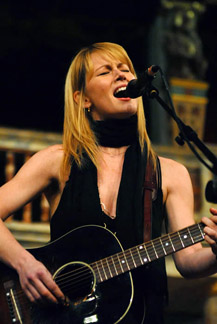
Allison Moorer
from allisonmoorer.com
“The running thread – and I didn’t notice it at the time -is strength…Even if they’re not hitting you over the head, they are strong songs, coming from a worldly place, yet the language is reallyfeminine…and people lose sight of that strength, courage and dignity that is womanly.”
When Allison Moorer decided to make a record of other people’s songs, you know she wasn’t just going to grab a handful of whatever and set her slow burning alto to them like a low flame to dry twigs. No, the woman whose very first single was nominated for an Academy Award, whose albums have been marked by an artistic restlessness and passion and whose willingness to expose her deepest truths has yielded some of pop music’s subtlest, but most enduring treasures wanted to do something special – and in looking around the vastness of American music, she realized how much of the glory of women songwriters was overlooked and oversimplified.
“I think true feminity is not encouraged,” she says in that smoky drawl. “In the music business, you have two little boxes. Either you’re a whirly twirly girl or you’re a too-angry raging woman – and that’s just not even close. Men face their own share of problems, but they don’t face that.”
Certainly Moorer – working with producer and acclaimed roots artist Buddy Miller – have conjured a rich pastiche of the phases of women’s hearts, lives, needs and yearnings. Whether it’s a dervish take on Patti Smith’s “Dancing Barefoot,” a stoic, proud embrace of Kate McGarrigle’s “Go, Leave,” a winking nod to the naughty that is Nina Simone’s “Sugar In My Bowl” or the elegant survival of her sister Shelby Lynne’s “She Knows Where She Goes, the lithe songstress demonstrates diversity, eclecticism and the range of the XX chromosome set.
“I wanted to do this record to become a better writer,” the now New York-residing, former Alabama-girl concedes. “I have spent years and years in my own head and my own little world, and this was a break to explore how other singer/songwriters experience life,”
Laughing, she concedes, “It made me a better singer, too… Both working with Buddy and considering how these lyrics, melodies and emotions fell. This got me to stretch vocally more than I have in a long time, so that growth was thrilling.”
Cut over a little less than a week’s time in Buddy Miller’s Dogtown Studio, what Moorer thought might be a quiet meditation on emotional tides and gilded moments of loss and desire turned into something far more dynamic, a bit surprising and ultimately thrilling for her.
“Every time I go into the studio with a notion of how it’s gonna be, it always comes out differently. If you go in with a severe notion of how something’s gonna be and you cling to it, you sometimes come out with something that is so much less than it could be – and to me, at this point in my life, it’s seeing how the idea grows that is so fascinating.
“I started with around 40 songs, culled it down to 24 by the time I got to Buddy – because there were soooo many songs once I got started that it felt like they all should be heard. But Buddy’s instincts about the songs and what would suit me were great… He knew I could do more than I did, actually! He definitely kept it from being a really quiet record… He brought a lot of dynamics to it, and made it kick in places.”
Whether it was learning to play acoustic guitar in open G for an elegiac take on Joni Mitchell’s knowingbeyond-her-years “Both Sides Now,” putting husband Steve Earle’s thumb to good use on Ma Rainey’s swampy “Daddy Good-bye Blues,” the hushed string section and French boite accordion that bathes “Go, Leave” or embracing the Gershwin-esque beauty of Cat Powers’ “Where Is My Love,” it is the interpretation that ignites the subtlest possibilities within the songs… and that also open up caverns of nuance in Moorer’s and the largely organic band’s performances.
For Moorer, who penned the title song, it was also about honoring the women who inspired her, calling attention to some who may’ve been overlooked and exploring songs that demonstrate the real female perspective. It was a labor of love as much as an unearthing.
“There were certain things… I couldn’t make this record without including a Joni Mitchell tune because where would girls with guitars be without her? The same goes for Patti Smith,” Moorer laughs. “Without her, there is a whole slew of women who wouldn’t have known where they fit in.” I wanted to make sure there were songs from some artists who were influential to me – Jessi Colter’s ‘I’m Looking For Blue Eyes’ was the first song my Dad taught me to sing… And I wanted to include some people who were overlooked, because maybe people don’t realize who the McGarrigles are or that June Carter Cash wrote ‘Ring of Fire.
‘
“That image (a ring of fire) is exactly what the first throes of falling in love feels like. It’s dangerous and people know that, but they don’t really care… and she captures that! I don’t think anyone, though, has ever explored how pretty it is and how sweet and smart. It really sums the whole complicated mess of emotions up in a very few words.”
In the complexity is the truth. In the simplicity is the essence. Yet far be it from Moorer to suggest that this is the definitive work on women songwriters. “Oh, my… yes,” she explains, almost apologetically, “There is no Lucinda (Williams), no Carly (Simon), no Stevie (Nicks), no Emmylou (Harris). There’s no a lot of people! I couldn’t do everyone I loved… and it came down to what could I bring the most to, what my gut wanted to do and my spine knew was right.”
“The thing about a lot of these songs,” says the woman whose voice is the essence of late nights, old quilts and vintage brandy, “they have so many layers. The further into them you go, the more you see… Look at the Ma Rainey song: in the first verse, she’s frustrated, in the next confused, then pissed off, then in the last verse, she’s sad. It really sums up a relationship and to me, it sounded like real life, because that’s how real life really is.
“People might wanna make women singer/songwriters these 2-dimensional, what’s defined as ‘hot things in the marketplace,’ but just like real life, female artists are so much more interesting than that. If you can capture the intelligence, the emotions, the rest of it… which is what we tried to do… well, you’ve got something.”
Listening to Mockingbird, you do. It’s an album of subtlety, sensuality, smolder and grace. For a woman who’s always walked the line between slow burning erotic charge and being both tender and aware, what else would there be?
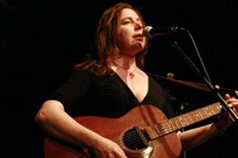 Jan Bell
Jan Bell
from janbellmusic.com
An English Cowgirl in Brooklyn
Jan Bell performs solo and with her Brooklyn based band the Cheap Dates. She also tours with Old timey country Trio The Maybelles.
Jan Bell and the cheap dates set out playing in her neighborhood – d.u.m.b.o. by the Brooklyn Bridge as part of her Urban Cowgirl Cabaret Tribute Series, turning old maritime loading docks into Live Music Stages.
Pedal Steel, violin, banjo and upright bass would squeeze onto a pick up truck stage outside an iron workers bar that stood there for a century. Singing original country blues, and songs by their honky tonk heroes – three part harmony sailed up above the Brooklyn Queens Expressway, the roof tops, and nyc water towers.
Jan grew up in Yorkshire and Nottinghamshire, England, and spent several years on the back roads of north america, learning songs from the rural south and mountain towns. When she first heard the songs of women such as Mother Maybelle, Hazel Dickens and Alice Gerrard – she felt right at home.
Wherever she goes, people always ask how come an english girl is singing so many american folk songs? Jan reckons the root of many of the songs she loves, are back in the coal mining country side where she was born and raised.
“Sometimes the main difference is in the name of a river, a town, a girl or a boy – but the melodies, and the stories are essentially the same. When folks from northern Britain sailed across the Atlantic- especially if all they knew was mining – they often settled in the Appalachian mountains. For generations, they stayed there, and the music was not only kept alive – but thrived. When i first went to Virginia and Kentucky, I could hear broad Yorkshire in the way people spoke. They had to be true dreamers, to get on the boat back then, and you can hear all that sheer hope and faith and courage in the songs.”
AND
Red Baraat Festival ! Dhol and brass band
Shimmering city kaleidoscope bouncing with Fela’s beats, bubbling up Led Zeppelin boom box blasting on whizzing skateboarders shoulders, as solo saxophone soars into the sky from 3rd floor window. In line at Punjabi Deli, behind cabbies, looking for a little taste of home. Colorful spices, chai fragrance mixes with the tang of the hot, asphalt road. Bhangra sounds take hold of my body. I am home in New York City, birth of Red Baraat Festival !
Led by master drummer Sunny Jain, Red Baraat Festival ! is the first and only dhol ‘n’ brass band of its kind in the States, melding the infectious North Indian rhythm Bhangra with funk, soca and jazz, and expressing the human spirit through improvisation and a powerful, live, raw sound. Comprised of dhol (double-sided, barrel-shaped North Indian drum slung on one shoulder), percussion and horns, this NYC-based group plays fresh originals, as well as traditional Punjabi songs and Bollywood numbers with a modern touch.
Baraat is Hindi for a marriage procession. In North India, it is a tradition on the day of the wedding for the groom to travel to his bride’s home on a magnificently decorated horse, surrounded by an entourage of family and friends. Led by a dholi and/or a marching band, this joyous celebration naturally induces dancing and singing and is inseparable from the energy and excitement of the musical festivities.
Red Baraat FESTIVAL! is:
Sunny Jain – dhol / drumset / vox; Rohin Khemani – tavil / percussion; Tomas Fujiwara – drumset / percussion; Arun Luthra – soprano saxophone; Mike Bomwell – tenor saxophone; Sonny Singh Suchdev – trumpet; MiWi la Lupa – bass trumpet; Dave Smith – trombone; John Altieri – sousaphone
Share

